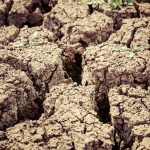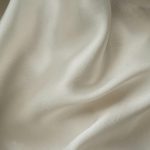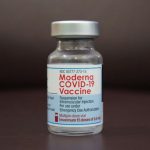Like a well-tailored suit, mohair production presents a polished exterior that often masks deeper ethical issues. As you explore the complexities of animal welfare and sustainability claims, you’ll discover that the reality isn’t as straightforward as it seems. The industry’s push for transparency raises questions about the true impact of mohair on both animals and the environment. What does this mean for the future of textile production?
Table of Contents
Key Takeaways
- Mohair production raises ethical concerns regarding animal welfare, particularly during shearing and post-shear care practices.
- Overgrazing by goats can lead to land degradation, highlighting the need for sustainable pasture management.
- Significant water usage in mohair farming strains local resources, necessitating conservation techniques for sustainability.
- Certifications like the Responsible Mohair Standard and Global Organic Textile Standard promote ethical practices and consumer trust in the industry.
- Increasing demand for sustainable textiles drives innovation in farming techniques and animal welfare standards in mohair production.
Overview of Mohair Production
Mohair production involves the harvesting of fibers from the Angora goat, primarily raised in South Africa, Turkey, and the United States. These goats are known for their long, lustrous hair, which you can spin into luxurious yarns and fabrics.
The process begins with shearing, typically done twice a year, where skilled workers carefully remove the fleece to guarantee the goats’ comfort and health. After shearing, the fibers undergo cleaning and processing to prepare them for various textile applications.
You’ll find mohair used in everything from high-end clothing to home furnishings. As you explore this industry, you’ll notice its unique qualities, such as durability and resilience, making mohair a sought-after material for both fashion and functional uses.
Animal Welfare in Mohair Farming
When you think about animal welfare in mohair farming, you can’t ignore the practices surrounding shearing.
It’s essential to guarantee that these methods comply with welfare standards to protect the animals involved.
Let’s explore how ethical shearing practices can impact the overall well-being of goats.
Shearing Practices Explained
Understanding shearing practices in mohair farming is essential for addressing animal welfare concerns. Proper shearing techniques can greatly impact the goats’ well-being and overall health.
Here are three key aspects to evaluate:
- Timing: Shearing should occur during warmer months, preventing goats from getting too cold and stressed.
- Technique: Skilled shearers use methods that minimize pain and discomfort, ensuring a quick and efficient process.
- Post-Shear Care: After shearing, it’s crucial to monitor the goats for any signs of stress or injury and provide adequate shelter and nutrition.
Welfare Standards Compliance
Guaranteeing compliance with welfare standards in mohair farming is essential for promoting ethical practices and safeguarding animal well-being.
You should prioritize the health and comfort of the goats by adhering to guidelines that prevent overcrowding, guarantee proper nutrition, and provide adequate shelter.
Regular veterinary care is vital, as it helps catch health issues early and maintain the herd’s overall well-being.
Additionally, educating farmers about humane handling techniques can reduce stress during shearing and other management practices.
By choosing suppliers committed to high welfare standards, you can support ethical mohair production.
Your purchasing choices directly impact animal welfare in the industry, encouraging better practices that ultimately benefit both the goats and sustainable farming.
Environmental Impact of Mohair Production
While many appreciate the softness and warmth of mohair, the environmental impact of its production raises significant concerns.
The process of raising Angora goats and processing their fibers can lead to harmful consequences for ecosystems. Here are three key points to take into account:
- Land Degradation: Overgrazing by goats can strip vegetation and lead to soil erosion, damaging habitats and reducing biodiversity.
- Water Usage: Mohair production often requires substantial water resources, which can strain local water supplies and affect surrounding communities.
- Chemical Use: The application of pesticides and fertilizers in mohair farming can contaminate soil and waterways, threatening both wildlife and human health.
Understanding these factors is essential for making informed choices about mohair products.
Sustainability Claims of Mohair
How can we determine the sustainability of mohair production? You’ll want to reflect on several factors.
First, look at the farming practices used by producers. Are they implementing rotational grazing or using organic methods?
Next, examine the animal welfare standards in place. Sustainable mohair production should prioritize the well-being of the goats.
Additionally, check if producers are certified by organizations that promote ethical practices, such as the Responsible Mohair Standard.
Transparency in sourcing is key; brands should openly share their supply chains.
Finally, ponder the lifecycle of mohair products—are they durable and biodegradable?
Economic Implications of Mohair Production
When you think about mohair production, consider how it creates job opportunities and impacts local economies.
Market price fluctuations can affect both producers and consumers, adding complexity to the industry.
Additionally, global trade dynamics play an essential role in shaping the future of mohair in the international market.
Employment Opportunities Growth
As mohair production grows, it creates a ripple effect in local economies, generating employment opportunities for communities involved in the industry.
This growth not only supports farmers but also enhances job prospects across various sectors.
Here are three key areas benefiting from increased mohair production:
- Shepherding and Farming: More farmers are needed to raise angora goats, which directly increases agricultural jobs.
- Processing Facilities: Increased demand leads to the establishment of local processing plants, providing jobs in manufacturing and quality control.
- Retail and Distribution: As mohair products gain popularity, retail and distribution networks expand, creating roles in sales, logistics, and customer service.
Market Price Fluctuations
The growth in mohair production not only creates job opportunities but also leads to significant market price fluctuations that can impact the entire industry. You might notice that these fluctuations can affect farmers, producers, and consumers alike. When demand surges, prices can skyrocket, but a sudden drop in demand can leave producers struggling. Understanding these dynamics is essential for anyone involved.
| Price Change | Market Reaction |
|---|---|
| Increase | Higher production costs |
| Decrease | Potential layoffs |
| Stabilize | Encourages investment |
Global Trade Dynamics
While you mightn’t think about it often, global trade dynamics play an essential role in the mohair industry, influencing everything from production levels to pricing strategies. Understanding these dynamics can help you appreciate the broader economic implications of mohair production.
Here are three key factors to contemplate:
- Export Markets: Countries like South Africa dominate the mohair trade, impacting global supply and price fluctuations.
- Demand Trends: Changes in consumer preferences, especially towards sustainable fashion, affect demand for mohair and can drive prices up or down.
- Trade Policies: Tariffs and trade agreements can greatly influence pricing, affecting both producers and consumers in various markets.
Ethical Concerns Regarding Labor Practices
Though many consumers appreciate mohair for its luxurious qualities, ethical concerns regarding labor practices in its production can’t be overlooked. Many workers endure poor conditions, low wages, and long hours, raising questions about their rights and well-being. You need to be aware of these issues as you consider your purchases.
| Concern | Description |
|---|---|
| Working Conditions | Many laborers work in unsafe environments. |
| Wages | Low pay is common, affecting livelihood. |
| Hours | Long hours can lead to exhaustion and stress. |
Regulatory Frameworks and Certifications
Addressing ethical concerns in mohair production involves understanding the regulatory frameworks and certifications that aim to protect workers and guarantee humane practices.
Understanding ethical frameworks and certifications is essential for ensuring humane practices in mohair production.
These standards help guarantee that producers adhere to ethical guidelines while fostering accountability in the industry. Here’s what you should know:
- Responsible Mohair Standard (RMS): This certification guarantees that mohair is sourced from farms that practice humane treatment of animals and uphold worker rights.
- Global Organic Textile Standard (GOTS): While primarily focused on organic textiles, GOTS also emphasizes ethical labor practices throughout the supply chain, including mohair production.
- Animal Welfare Approved (AWA): This certification focuses on animal welfare, guaranteeing that mohair production meets high standards for humane treatment.
Understanding these frameworks can empower you to make informed purchasing decisions.
The Future of Mohair Production and Sustainability
As the demand for sustainable textiles grows, the future of mohair production hinges on innovation and responsible practices. To meet consumer expectations, producers must adopt ethical farming techniques and invest in eco-friendly technologies. Transparency in sourcing and production processes will be essential in building trust.
| Key Innovations | Sustainable Practices |
|---|---|
| Genetic improvements in goats | Improved pasture management |
| Use of biodegradable dyes | Water conservation techniques |
| Enhanced wool processing | Animal welfare certifications |
Frequently Asked Questions
What Are the Health Benefits of Mohair for Consumers?
Mohair’s natural properties offer you warmth, breathability, and moisture-wicking benefits. It’s hypoallergenic, making it suitable for sensitive skin. Additionally, its durability guarantees long-lasting use, providing comfort and style for your everyday wardrobe.
How Does Mohair Compare to Other Natural Fibers?
When you compare mohair to other natural fibers, you’ll find it’s softer and more resilient. It offers excellent warmth and breathability, making it a popular choice for luxurious garments and high-quality textiles. You’ll appreciate its unique qualities.
What Is the History of Mohair Production?
You’d be amazed to learn that mohair production dates back thousands of years, originating in ancient Persia. Its luxurious fibers quickly gained popularity, becoming a staple in high-fashion textiles, cherished by cultures around the globe.
Are There Alternatives to Mohair in the Textile Industry?
Yes, there are several alternatives to mohair in the textile industry. You might consider using organic cotton, bamboo, or recycled polyester. These options offer sustainable benefits while providing similar textures and qualities for your projects.
How Can Consumers Support Ethical Mohair Production?
You can support ethical mohair production by researching brands, choosing certified suppliers, and advocating for transparency. Engage with companies directly, ask questions about their practices, and promote those making strides in sustainability and animal welfare.
- Does Chiffon Fabric Stink - July 15, 2025
- Does Chiffon Fabric Affect the Economy - July 15, 2025
- Does Cotton Fabric Have a Nap - July 15, 2025







